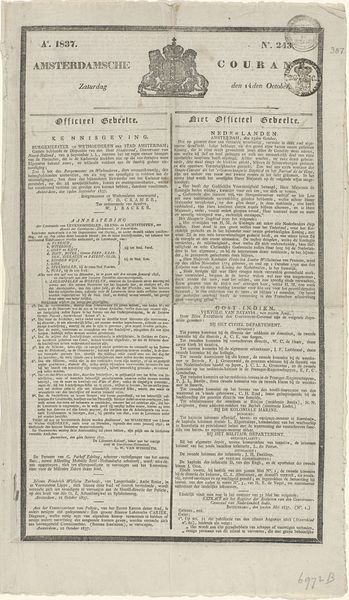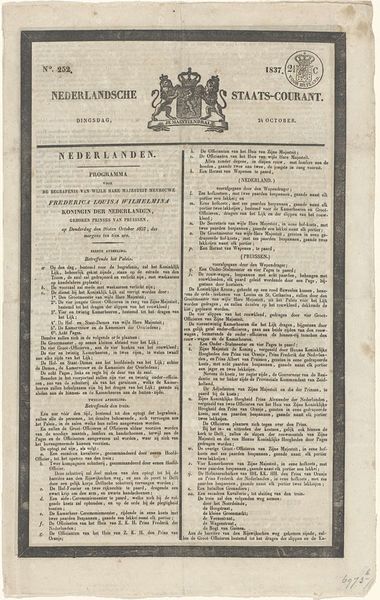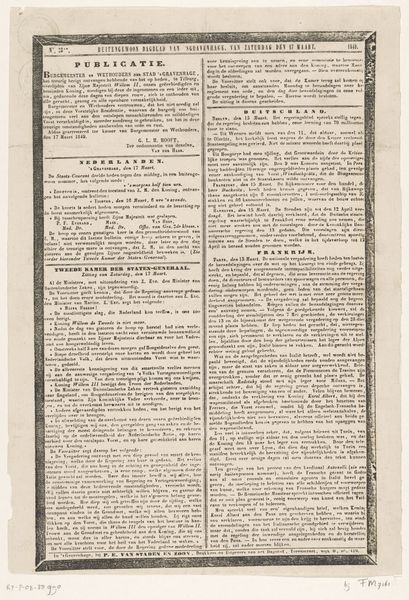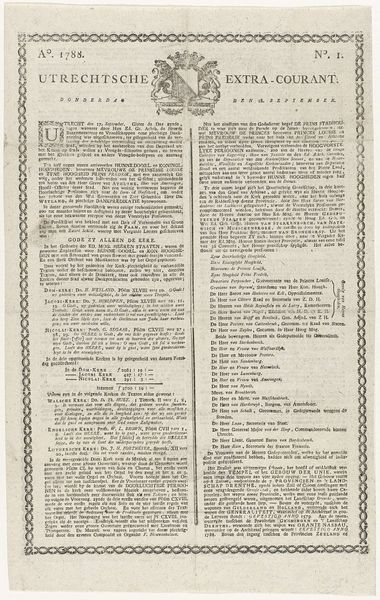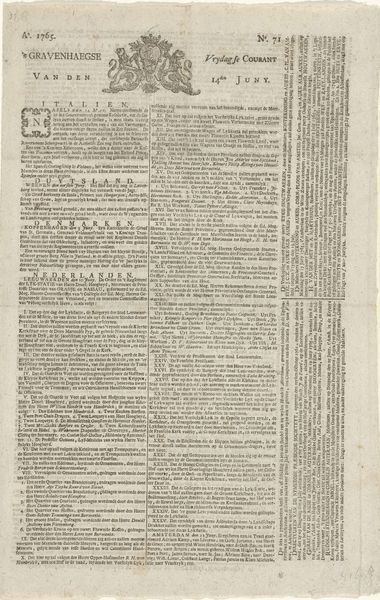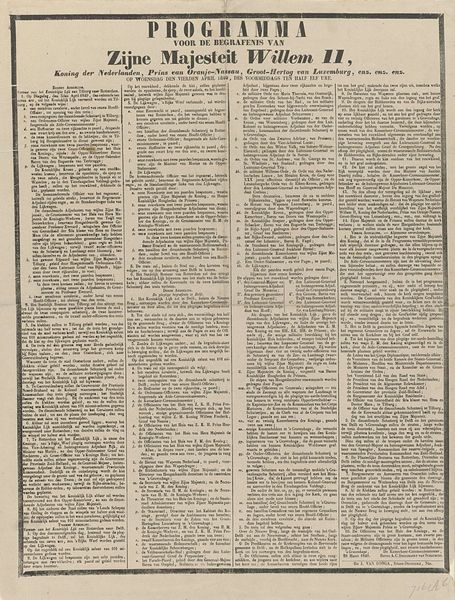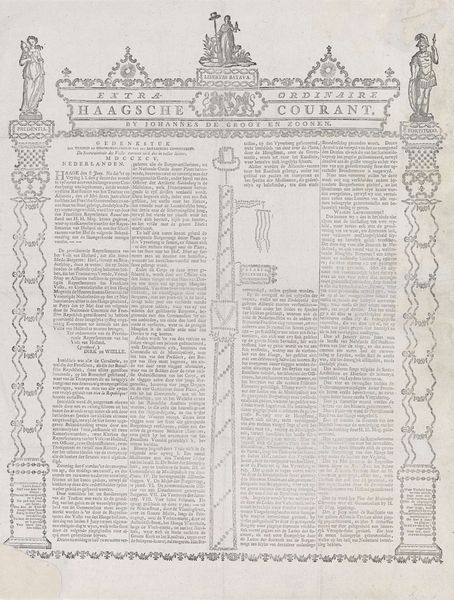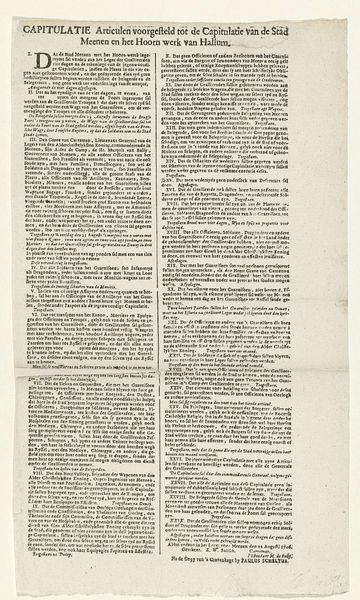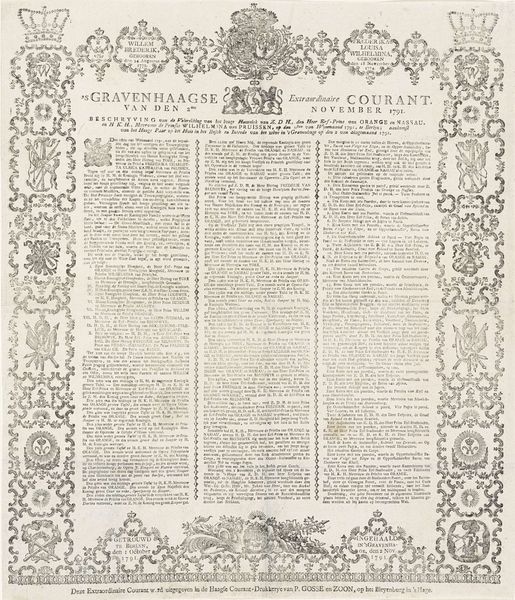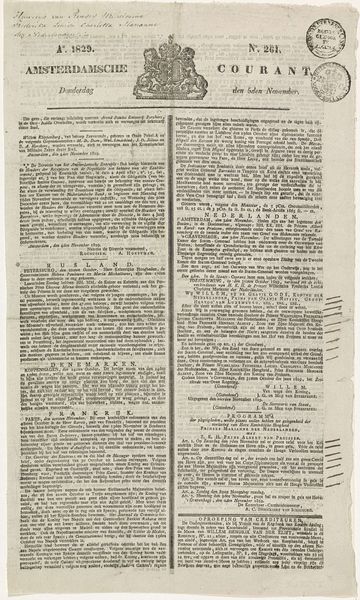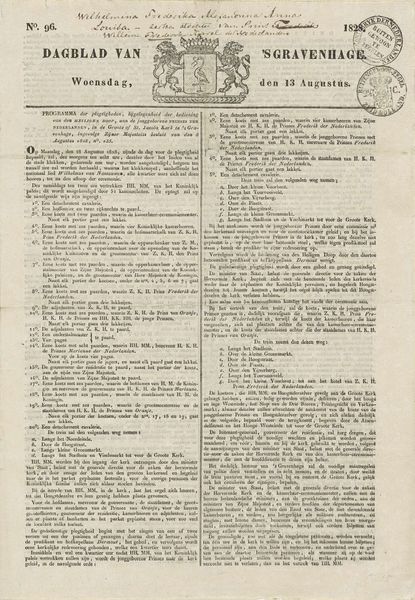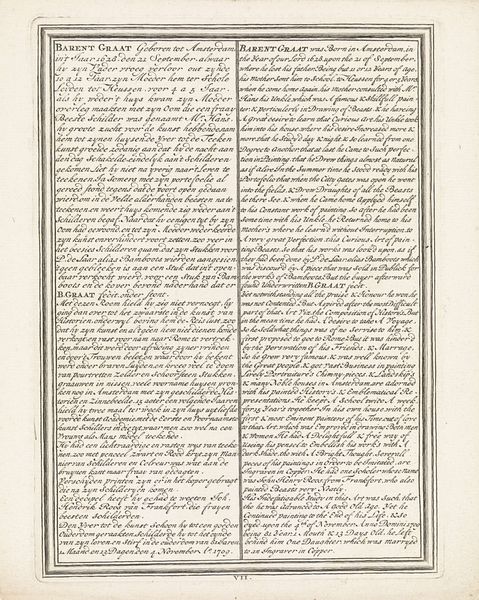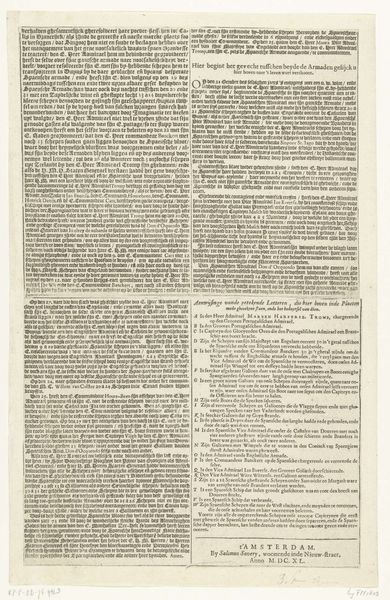
Programma van de begrafenis van Wilhelmina prinses-douairière van Oranje-Nassau, 1820 1820 - 1826
0:00
0:00
graphic-art, print, typography
#
portrait
#
graphic-art
#
type repetition
#
aged paper
#
page thumbnail
# print
#
old engraving style
#
hand drawn type
#
typography
#
newspaper layout
#
stylized text
#
thick font
#
word imagery
#
columned text
Dimensions: height 391 mm, width 230 mm
Copyright: Rijks Museum: Open Domain
Curator: What a fascinating artifact! This is the "Programma van de begrafenis van Wilhelmina prinses-douairière van Oranje-Nassau, 1820" printed sometime between 1820 and 1826 by J. Du Mée. It outlines the order of service for Princess Wilhelmina's funeral. Editor: It has such a formal yet fragile feel. The aged paper and dense typography create a somber mood, like glimpsing a private moment from a distant era. The bordering reminds me of ancient Greek motifs...a very orderly pattern! Curator: Yes, the typography itself conveys a sense of authority and tradition, typical of printed announcements during that era. These broadsides served an important public function, informing citizens of significant state events and solidifying royal presence. Note also the decorative border that signifies status, not only communicating practical information, but performing royal propaganda in the face of political challenge. Editor: Look at the phrase "Oranje-Nassau", one of the great royal houses. "Oranje" – the orange! Such a loaded word in their heritage. Its a symbol of power and resilience, even resistance; yet here it announces solemn loss. This document shows the transformation of potent visual and verbal cues from expressions of triumph to conveying royal mourning. Curator: Precisely! The arrangement into numbered sections also reinforces order and control during a time of national grief. The distribution of the prints to the people was a display of authority. Editor: What about the repetition of "de Lijk"? I am sure that it resonates in ways we struggle to grasp now; its deliberate visual placement is almost spellbinding! Curator: It's all very performative isn't it? It's easy to read this piece only for its face value but there's political and cultural significance to be parsed beyond its main purpose as simply informing people of funerary procedures. Editor: Absolutely. When we step back and consider the many cultural threads interwoven here, this seemingly simple program offers a poignant and revealing look into both a royal death and public spectacle of loss.
Comments
No comments
Be the first to comment and join the conversation on the ultimate creative platform.
